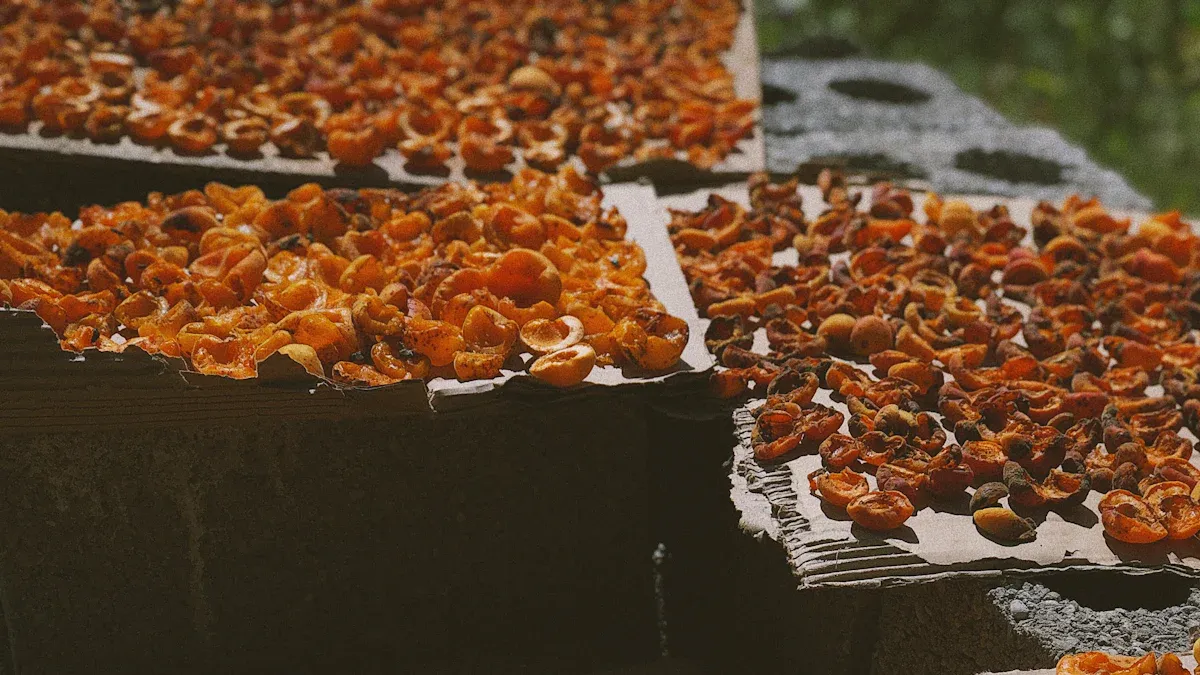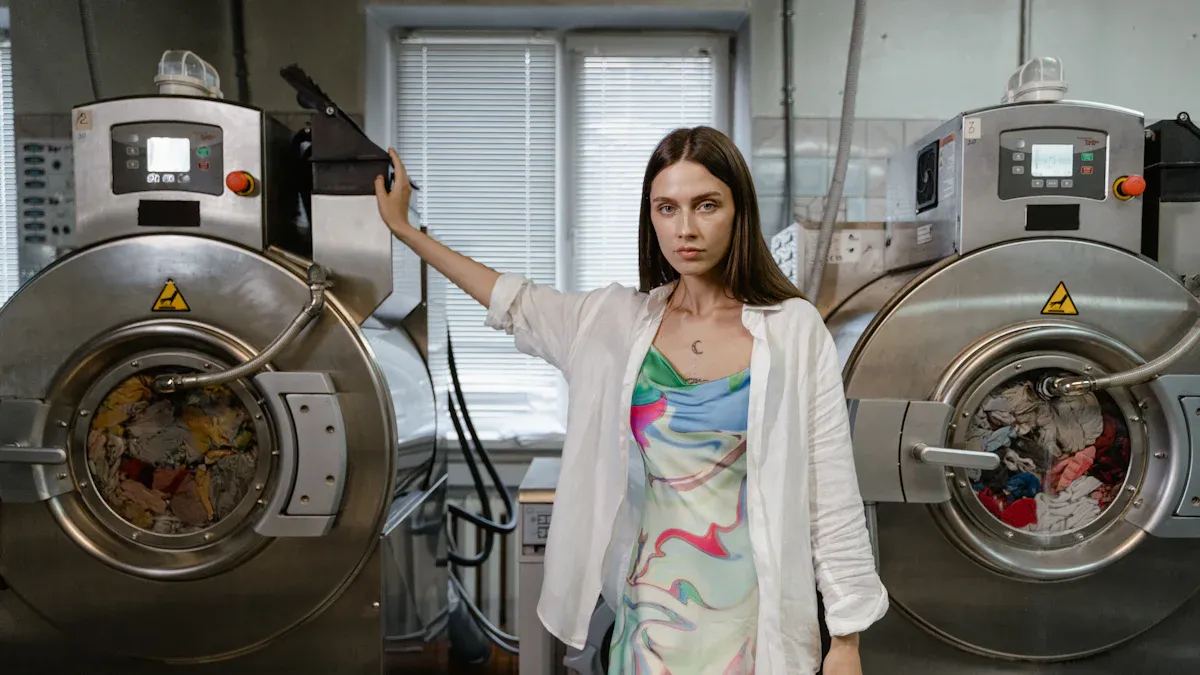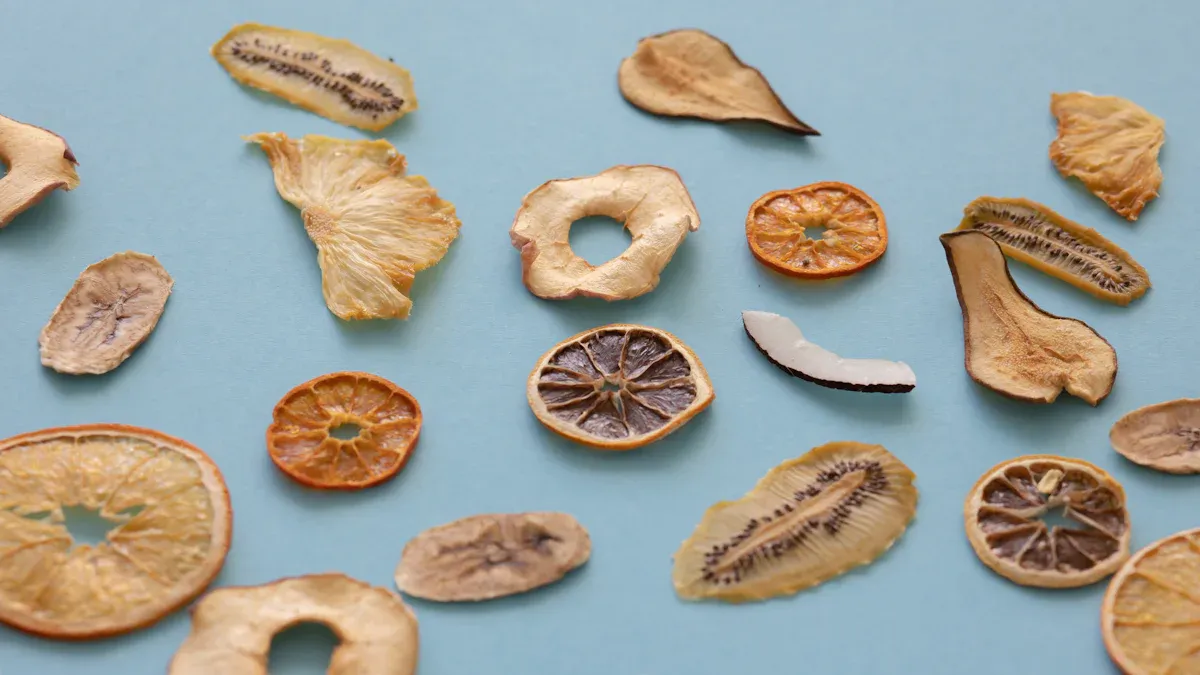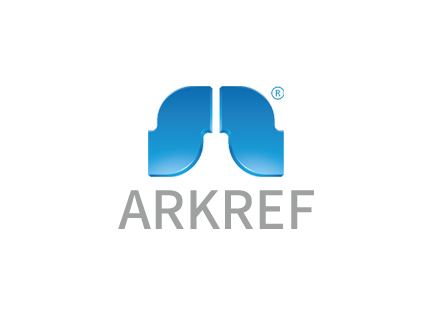Freeze Dryer or Dehydrator Which Method Preserves Food Best

If you want the best results for food preservation, the Freeze Dryer stands out. You get the highest nutrition, the best taste, and a texture that feels close to fresh. Both preservation methods make food last much longer than normal, but shelf life depends on how you store your food. You should also think about cost, how easy it is to use, and your daily needs. Food preservation always requires you to balance quality, price, and convenience.
Key Takeaways
Freeze drying helps food stay fresh for a long time. It keeps most of the nutrients, taste, and texture for up to 25 years. - Dehydrating costs less and is easier to do. But it changes the food’s taste, texture, and nutrition. - Freeze dried food is light and crunchy. It is good for emergencies or storing food for a long time. - Dehydrated food is good for eating every day. It saves money and helps stop food waste. - Pick freeze drying if you want the best quality and longest shelf life. Choose dehydrating if you want an easy and cheap way to save food.
Quick Answer
Summary
You want to keep your food fresh and safe for as long as possible. Freeze drying gives you the best results for taste, nutrition, and shelf life. This method uses very low temperatures and a vacuum to remove water from food. You get lightweight food that keeps most of its original flavor and texture. Freeze-dried food can last up to 25 years if you store it properly. You can rehydrate it quickly with water, making it great for emergencies or camping. The main downside is the cost. Freeze dryers are expensive and need more care.
Dehydrating uses heat and airflow to remove moisture from food. You can use a simple machine at home. This method costs less and works well for many types of food. Dehydrated food feels chewier and may lose some flavor and nutrients. It does not last as long as freeze-dried food, but it still helps you store food for months or even a year.
Key Points
Freeze drying keeps food close to its original taste, texture, and nutrition.
Freeze-dried food is lightweight and stores well for a long time.
Dehydrating is easier and cheaper but changes the texture and taste of food.
Dehydrated food loses more nutrients and does not last as long.
New methods, like vacuum microwave dehydration, try to mix the best parts of both ways, giving you better color, aroma, and nutrition.
Tip: If you want the highest quality and longest shelf life for your food, choose freeze drying. If you want a simple and budget-friendly way to preserve food, dehydrating works well for most needs.
Freeze Dryer

Freeze Drying Process
A freeze dryer takes water out of food but keeps its shape and taste. First, the food gets frozen. This turns the water inside into ice and helps the food keep its form. Then, the freeze dryer makes a vacuum. In this vacuum, the ice skips melting and turns straight into vapor. This is called sublimation. Most of the water leaves the food without using heat. Because there is no heat, the food keeps its nutrients. After that, the machine warms the food a little to get rid of any water left. This last step makes sure the food is very dry. Dry food lasts longer and stays safe to eat for many years.
Today’s freeze dryers use new technology. Many home and business machines use vacuum freeze drying. This mixes freezing, vacuum, and gentle heat. Some new machines use microwave vacuum drying. These dry food faster, save energy, and help keep the food’s color and taste. You can buy vacuum freeze dryers for your home. This makes it easy to save fruits, vegetables, and meats.
Benefits
Freeze drying has many good points:
The food keeps almost all its taste, color, and feel.
Freeze dried foods keep up to 98% of their vitamins and minerals.
It works well for fruits, vegetables, and meats.
Freeze dried food can last up to 25 years if you store it right, so it is great for emergencies.
The food is light and easy to make ready again with water.
Note: Freeze drying keeps more nutrients than dehydration because it does not use heat. This helps protect vitamins that break down with heat.
Drawbacks
There are some things you should know:
Freeze dryers cost a lot more than dehydrators.
You need to clean and care for the machine often.
The process can take a long time, sometimes up to 24 hours for one batch.
Freeze drying uses more power, unless you have a newer microwave vacuum model.
Even with these problems, freeze drying is still the best way to keep food fresh and safe for a long time.
Dehydrator

Dehydrating Process
A dehydrator dries food by blowing warm air over it. The machine heats the air to a set temperature, usually between 40 and 75 °C. This warm air moves through the chamber and pulls water out of fruits, vegetables, and meats. You can dry food by picking the right heat and letting the air move around. The process works best if you control the heat, humidity, and airflow. Some people use solar dryers that use the sun’s energy. These can have controls to help get better results. You check the food’s moisture before and after drying to make sure it is dry enough. Good dehydration keeps food safe and helps it last longer.
Tip: Always check your dehydrator’s heat settings. The right heat helps you dry food without losing too much quality.
Benefits
Dehydrated foods have many good points for home use. You can buy a basic dehydrator for about $50. Bigger ones cost a little more. This makes dehydrating one of the cheapest ways to save food. You can dry fruits, vegetables, and meats at home. Dehydrated foods take up less space and weigh less, so you can store more in your pantry. The process is easy. You slice the food, put it on trays, and turn on the machine. You can save money by drying fruits and vegetables that are on sale or almost bad. Dehydrated foods help you waste less and enjoy your favorite foods all year.
Lower cost than freeze dryers
Simple to use and easy to clean
Great for saving seasonal fruits and vegetables
Helps cut food waste and saves money
Drawbacks
Dehydrated foods do not keep their taste and texture as well as freeze-dried food. The shelf life is shorter, usually several months to a year. You lose some nutrients, like vitamin C and antioxidants, during dehydration. The process changes the color and feel of fruits and vegetables. Dehydrated foods often turn chewy or leathery. You need to store them in airtight containers to keep them safe. If you do not dry the food enough, it can spoil faster.
Shorter shelf life than freeze-dried food
Loss of some vitamins and nutrients during dehydration
Texture and color changes in fruits and vegetables
Not all foods, like some meats, dry well
Note: Dehydrated foods are still a good choice for many people, but you should know that some nutrients will be lost during the process.
Comparison
Nutrition
You want your food to keep its nutrients. Freeze drying saves more vitamins and minerals than dehydrating. The freeze dryer uses cold and a vacuum. This means heat does not break down the nutrients. You get almost all the nutrition from the food. Dehydrated foods lose more nutrients, like vitamin C and antioxidants. This happens because heat is used in the process. If you care about nutrition, freeze dried foods are best.
Freeze drying keeps up to 98% of vitamins and minerals.
Dehydrated foods lose more nutrients during drying.
Freeze dried foods have higher nutrition for long-term storage.
Taste
Taste is important when you eat food. Freeze dried foods keep their flavor. You can eat them dry, and they taste crunchy and fresh. Dehydrated foods taste less strong unless you add water or cook them. Kids like freeze dried foods because of their taste and texture.
Aspect | Freeze Dried Foods | Dehydrated Foods |
|---|---|---|
Taste | Keeps flavor, crunchy, tasty right out of the bag | Less tasty without water, often used in recipes |
Suitability for Kids | Kids like the taste and texture | Harder for kids to eat dry |
Typical Use | Snacks, eaten as-is | Used in soups, casseroles |
Tip: Pick freeze dried foods for snacks that taste good and kids enjoy.
Texture
Texture changes how food feels when you eat it. Freeze drying keeps the shape and crunch. Before adding water, freeze dried foods are crispy. After you add water, they get back much of their old texture and taste. Dehydrated foods shrink and turn tough or leathery. Even with water, they may not feel like fresh food.
Attribute | Freeze-Dried Foods | Dehydrated Foods |
|---|---|---|
Texture Before Rehydration | Light, crunchy, keeps original look | Shrinks, tough, leathery, hearty |
Texture After Rehydration | Gets back much of old texture and taste | Becomes soft but may not feel fresh |
Dehydrated foods often need soaking or cooking to get soft. Freeze dried foods can be eaten dry or with water. You get a more natural texture with freeze drying.
Shelf Life
You want your food to last a long time. Freeze dried foods can last up to 25 years if you store them right. Keep them in sealed containers, cool, dry, and dark. Dehydrated foods can last over 20 years with good storage, but most home-dried foods last months or a year. Using Mylar bags and oxygen absorbers helps both methods last longer.
Freeze dried foods: Up to 25 years or more with good storage.
Dehydrated foods: Over 20 years possible, but usually less at home.
Good storage keeps food safe and shelf-stable for a long time.
Cost
Cost matters when you pick a way to save food. Freeze dryers cost much more than dehydrators. You pay a lot for the machine and to run it. Dehydrators are cheap and easy to buy. You spend less money to start dehydrating food at home.
Freeze dryer: High cost, uses more energy.
Dehydrator: Low cost, easy to use.
Note: If you want to save money, pick dehydrating. If you want the best quality and shelf life, freeze drying is worth the price.
Ease of Use
You want a method that fits your daily life. Dehydrators are simple. You slice food, put it on trays, and turn on the machine. Cleaning is easy. Freeze dryers need more care and cleaning. The process takes longer, and you must clean the machine often. New freeze dryers are easier, but dehydrators are still simpler.
Dehydrator: Easy to use, quick setup, simple cleaning.
Freeze dryer: More steps, longer process, needs regular care.
Tip: Pick a dehydrator for a quick and easy way to save food. Choose a freeze dryer if you want the best quality and do not mind extra work.
Choosing the Best Method
For Home Use
When you want to preserve and store food at home, you should think about your budget, space, and how much time you have. Dehydrators work well for most families. You can dry fruits, vegetables, and even some meats. The process is simple, and you do not need much training. If you want the best results and have a bigger budget, home freeze drying gives you food that tastes fresh and keeps its nutrition. You can store freeze dried food for years, making it a smart choice for meal prep and long-term food storage. Experts suggest using airtight containers or vacuum sealers to keep your food fresh and safe.
For Emergency Storage
For emergency food storage, you want food that lasts a long time and keeps its nutrition. Freeze dried food is the top choice here. It can last up to 25 years if you store it in the right conditions. You should control temperature and humidity, use proper containers, and check your food in the first weeks. The table below shows what to watch for:
Consideration | Details |
|---|---|
Temperature | Keep cool to prevent decay |
Humidity | Control to avoid moisture loss |
Containers | Use airtight and sealed containers |
Monitoring | Check food often after storage |
For Outdoor/Travel
When you travel or go outdoors, you need food that is light, easy to carry, and quick to prepare. Dehydrated food stands out for these needs:
Compact and space-saving
A 10 lb box can give you 40 lbs of fresh food after rehydration
Quick to prepare—just add warm water and wait about 3 minutes
Durable and travel-friendly
Freeze dried food also works well for outdoor trips. It is light and easy to rehydrate, but dehydrated food often costs less and packs smaller.
Final Thoughts
You should choose your method based on your needs. For daily home use, dehydrators are simple and budget-friendly. For long-term food storage or emergencies, freeze drying gives you the best results. If you travel or camp, dehydrated food is easy to pack and quick to prepare. Both methods help you preserve and store food safely. Think about your goals, budget, and how you plan to use your food before you decide.
Freeze drying keeps almost all nutrients in food. It can make food last up to 25 years. Dehydrating is cheaper and good for daily use. You should think about your money, space, and how you will use the food. Do not use weak containers or leave food open. Make a list of foods you want to save. Use trusted guides to pick the best way.
FAQ
What foods work best in a freeze dryer?
You get the best results with fruits, vegetables, cooked meats, and dairy. Freeze drying also works well for full meals. Avoid foods with high oil or sugar content because they do not dry well.
Can you dehydrate cooked meals?
Yes, you can dehydrate cooked meals like stews or pasta. Cut food into small pieces for even drying. Store the dried meal in an airtight container. Add water to rehydrate when you want to eat.
How do you store freeze-dried and dehydrated foods?
Store both types in airtight containers. Use Mylar bags or glass jars with oxygen absorbers. Keep food in a cool, dry, and dark place. This helps your food last longer and stay safe.
Is freeze drying safe for all foods?
Freeze drying is safe for most foods. You should not freeze dry foods with high fat or sugar. These foods do not dry well and can spoil faster. Always follow safety guidelines for best results.
Which method saves more money over time?
Dehydrators cost less to buy and use. You save money if you dry food often. Freeze dryers cost more at first, but you save money if you want to store food for many years.
See Also
Top Reasons IQF Tunnel Freezers Excel At Food Preservation
Ways Cryogenic Tunnel Freezers Improve Overall Food Quality
Choosing Between Cold Rooms And Freezer Rooms For Needs
A Complete Guide To Quick Freezing Compressors In Food Processing
Deciding Between Tunnel And Spiral Freezers For Best Results

